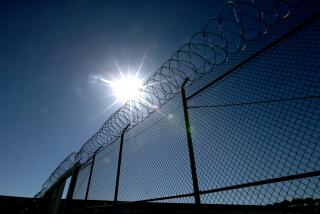Horses among us
Not far from my farm there is a 10-acre field that is fenced and maintained as pasture for three horses. The horses are splendid animals, and when they catch sight of me walking near their paddock, they come galloping down the field to greet me (actually, to see if I have a carrot or an apple in my pocket, which, sometimes, I do). Always it is a pleasure to see them.
These are not working horses, but like most horses in California, they are kept as pets, and expensive pets at that. To board a horse here, and pay a few vet bills, runs around $5,000 a year, similar to the cost of raising an average child not yet in college. If you want to take your horse trail riding in interesting places, you need to add a diesel pickup and a horse trailer and a saddle and boots and a lot of other paraphernalia, and quickly the cost rises to more than $10,000 a year, which is why we think of horses as the playthings of rich people.
And yet, plenty of middle-class people, and even poor people, keep horses. A long-haul truck driver, overdosed on country western music and cowboy movies, fences a half-acre of dust next to his mobile home so he can keep a horse (he calls this his “ranch”).
Even if you skimp on grain and use low-grade hay, a horse is still expensive. In 2008, when the economy was in free fall, Craigslist was flooded with offers of horses “free to a good home.”
With my farmer’s mind-set, I can’t help noticing that this 10-acre horse pasture is excellent loam soil, and instead of pasture, it could be producing each year 20,000 pounds of almonds or 30,000 pounds of walnuts or 800,000 pounds of tomatoes. Following this line of thought leads to an interesting calculation. According to a recent census, there are 698,000 horses in California. Each year, a horse consumes pasture grass, about 1,500 pounds of grain and 3.5 tons of high-quality hay, mostly alfalfa. Alfalfa is California’s thirstiest crop, using about 20% of all irrigation water in the state, according to UC Davis. Though alfalfa hay primarily goes to dairy cows, horses are a close second.
Based on their consumption of alfalfa, it turns out that horses use about 1.9 million acre feet of water each year, which amounts to 7% of the state’s irrigation water.
These observations might stir controversy in the perennial wrangle over water use in California. That much for horses? When we cut back allotments to farmers in order to fix the Sacramento-San Joaquin delta? When all the models predict less water in the future? When all of Los Angeles County consumes only about 1 million acre feet a year, about half of the amount allotted to horses?
But I would put a positive spin on it: The abundance of horses among us demonstrates that our wealth of land and water is still great enough that we can share them generously with other species. Our landscape is not as desperately enslaved to human purpose as that of China, for example, where every square foot must have a cabbage and two onions planted on it.
A free-market economy can surprise us at times by allocating scarce resources in unexpected ways that would never be considered in a centrally planned economy. Horses are a case in point. That we collectively commit so much water and land to horses is evidence that their value to us, however intangible, is significant, and that their loss would constitute a kind of cultural impoverishment.
As to my neighbor’s 10-acre pasture with its three magnificent horses, I would much rather see the horses there than 10 more acres of tomatoes, which already surround me on all sides. That’s easy for me to say; I’m not the one footing the bill.
Mike Madison farms olives, apricots and melons in the Sacramento Valley
More to Read
A cure for the common opinion
Get thought-provoking perspectives with our weekly newsletter.
You may occasionally receive promotional content from the Los Angeles Times.










